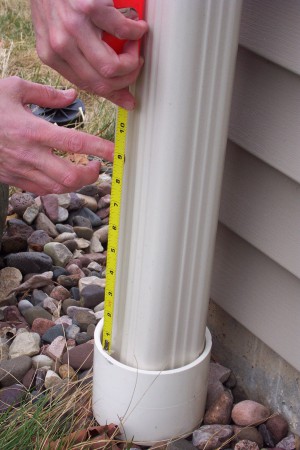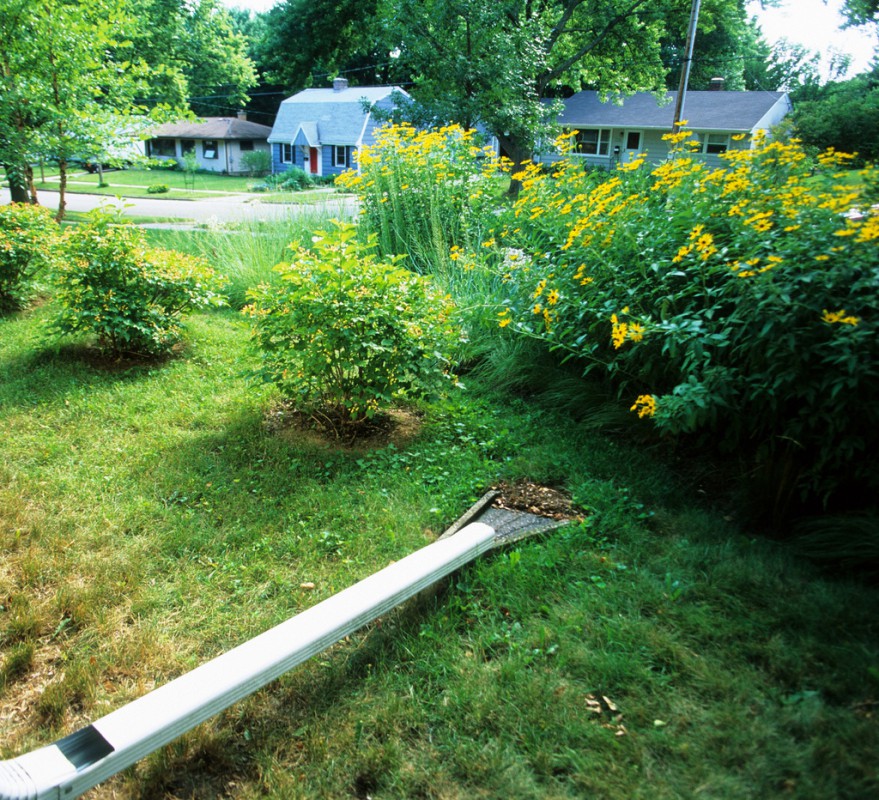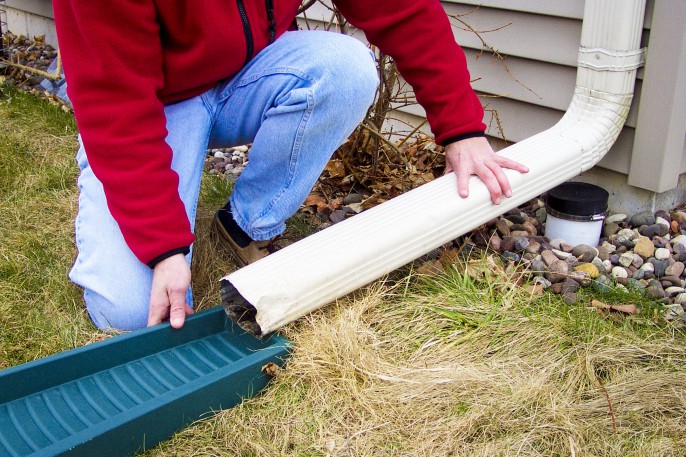Downspout Disconnect
If the gutters and downspouts on your home drain into the ground or across paved surfaces, disconnecting or redirecting them can make a substantial positive impact for stormwater management. Disconnecting the downspout from the storm drain system and redirecting it to the lawn, a garden, or a rain barrel can provide a number of environmental benefits:
- Reduce runoff volume
Reducing the amount of water that enters a storm drain prevents high volumes of water from flowing directly into streams and rivers, causing erosion. - Keeps pollutants out of our waters
When water runs along impervious area it picks up pollutants, trash, oils, and chemicals and carries them directly into our waterways. Preventing stormwater from running across paved surfaces reduces the amount of pollutants carried into streams and rivers.
Disconnecting your downspout can also save you money on your water bill if you direct the water into a garden or a rain barrel for later use.
How to Disconnect Downspouts
If your gutter system flows directly into the ground, a downspout disconnection is one of the cheapest and easiest BMPs you can implement at your home.

The downspout is cut about 8 inches above the standpipe to allow the elbow to fit and direct water away from the foundation. Image courtesy: Blue Water Baltimore
Things to ensure when performing a downspout disconnect:
- Water will be flowing away from all houses and structures
- Water will empty no less than 6 feet from your home to prevent damage to the foundation
- Water will not be flowing into an area with a steep slope, as water may erode the slope and will not drain properly
- Water will be emptying no less than 6 feet from sidewalks and pavement to prevent reconnection with the storm drain
Tools you will need:
- Hacksaw
- Drill
- Screwdriver
- Pliers
- Tape measure
- Sheet metal screws
- Downspout elbow
- Downspout extension
- Standpipe cap
- Splash block
Performing a downspout disconnection:
- Measure and cut the existing downspout 9 inches from the standpipe
- Cap the standpipe so water cannot continue to enter the storm drain through this entrance
- Attach the downspout elbow to the downspout using pliers to ensure a tight fit
- Secure the elbow with sheet metal screws
- Attach the downspout extension and secure with sheet metal screws
- Place a splash block at the end of the extension to help direct water and prevent erosion
For further guidance on performing a downspout disconnection be sure to check out the additional resources on this page.

Divert your downspout into the lawn, a garden or a rain barrel to reduce water usage and costs. Image courtesy: Wisconsin Department of Natural Resources


